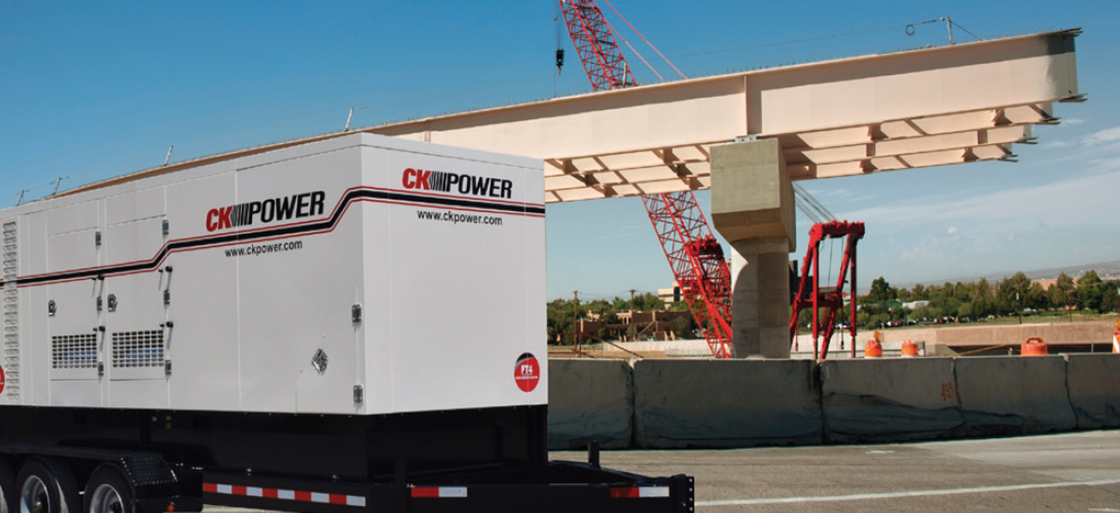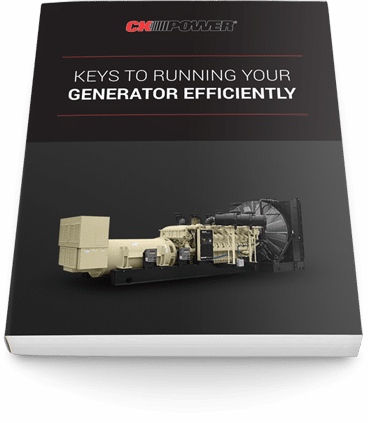Prime power generators are robust and versatile, suiting any application that requires a reliable source of continuous power. They’re useful for almost any industry that requires a primary power source apart from the utility grid — oil and gas applications, field work applications, agricultural applications and even on-grid data centers all have uses for prime power generators.
When choosing a generator for your particular application, though, there are a lot of factors to weigh. This post will walk you through several important considerations for prime power generators, such as:
- Comparing prime power ratings to continuous and standby.
- Considerations for load management applications.
- Which fuel to choose: Diesel or gaseous.
- Tier 4 considerations for your prime power generator.
- What to know about power output, run time and maintenance.
Comparing gen set power ratings: Prime vs. continuous vs. standby
Prime power generators are just one of three main gen set types: prime, continuous and standby. Generators are rated to provide one of the three types of power per ISO 8528, the industry standard defining gen set power ratings.
A generator’s rating refers to its maximum power capability under specific conditions with regular maintenance. When choosing a generator, you need one rated tosupply the type of power best-suited for your application during the entire timeframe you need it.
- Prime running power (PRP) rating
Generators rated for prime running power can be run 24/7 at near maximum load — usually hovering around 80% max capability. In rare overload situations, prime power gen sets can handle loads of 10% over their rated output, so long as it is not overloaded for more than 1 hour in a 12-hour span, or 500 hours per year. With proper maintenance, there is no cap on how many hours you may operate. - Continuous operating power (COP) rating
Prime and continuous power ratings are very similar. However, continuous power ratings do not allow for varying loads or overload capability. A generator rated for continuous power can be run for an unlimited number of hours per year, but not as close to max capability as a prime power generator. They should be run at about 70% of the maximum rating on average, and never overloaded. - Emergency standby power (ESP) ratings
A generator rated for standby power should only be used in true emergency situations, and never in parallel with utility lines. Standby generators should be run for no more than 200 hours per year at an average load of 80% their rated maximum output.
As compared with other generator types, prime power generators are better for continuous use, especially when variable loads or overload situations might be present. Essentially, prime power generators can be used for any application that needs a reliable source of primary power.

Load management applications for prime power generators
Prime power generators are most commonly used as a site’s primary source of continual power. But they can be used for on-grid applications as well.
Data centers and power plants will often implement prime power generators as a way to offset power provided by utility providers during times of peak usage. This practice, called load management, is mutually beneficial —and lucrative— for both the end-user and the utility provider.
Load management usually involves an agreement between the utility provider and the end-user —for instance, a manufacturing plant— to reduce electricity usage in times of high demand by offsetting load demand with a prime power generator.
You can use your prime power generator for load management in two ways:
- Peak shaving
In a peak shaving setup, the utility provider will provide you with a fixed amount of power. When your application exceeds that threshold, your prime power generator will kick on and make up the difference. Usually, the utility provider will pay the end user for providing that additional power. It helps the utility provider manage your peak usage times, and predict the amount of power they need to provide across the grid.
- Base loading
Simply put, base loading setups are the opposite of peak shaving. You will run your prime power generator at a fixed output. If you require loads beyond your generator’s capability, the utility provider will make up the difference.
Both peak shaving and base loading can be implemented by high-usage applications to prevent outages and ensure adequate power is always available, even during peak usage periods.
Here’s how load management benefits both the utility provider and the end-user:
The end-user —a data center, manufacturing plant or any other high-usage application— uses their prime power generator to create power, preventing power outages and costly downtime. The utility provider can reallocate the power they don’t provide to the data center and add other users to the grid, without having to create more power themselves with another plant.
Type of fuel: Diesel vs. gaseous
Both diesel and gaseous generators will provide the primary power your application requires. Deciding between the two really comes down to three primary factors: efficiency, fluctuating fuel prices and application.
- Efficiency
Diesel is the more fuel-efficient option when you compare the volume of fuel required to power a gaseous generator to that required to power a diesel generator. However, as diesel engines raise in price, it’s not as simple as choosing a diesel prime power generator for fuel-efficient cost savings. You need weigh the lifecycle savings of choosing diesel or gaseous based on efficiency, maintenance cost predictions and host of other factors. For more information, read this article comparing diesel and gaseous generators. - Fluctuating fuel prices
Fuel prices will fluctuate over time. If, at the time you’re shopping for a prime power generator, diesel prices have skyrocketed, then perhaps a gaseous prime power generator might be the most attractive option. Conversely, if diesel prices are low, then maybe diesel is the best choice. - Application
The choice between diesel and gaseous generators really comes down to the application. In the oil and gas industry, for example, gaseous prime power generators are by far the best option — regardless of price fluctuations or efficiency, the payoff will be quicker for a gaseous generator because of the abundance of cheap natural gas. In other industries, however, diesel is likely the better option depending on the price.
The choice between diesel and gaseous prime power generators should be taken on a case-by-case basis. Work with your generator distributor or manufacturer to determine which solution is best for your application.
Tier 4 considerations for prime power generators
As of 2016, all diesel generators serving as an application’s prime source of power are now controlled by the EPA’s Tier 4 regulations. Even load management applications are regulated by Tier 4. To find out if your application must comply with Tier 4 standards, check out this flowchart.
Essentially, Tier 4 aims to reduce the emission of harmful pollutants —in particular, nitrogen oxides (NOx) and particulate matter (PM)— in the atmosphere. All new generators purchased must be Tier 4 certified.
For answers to any questions about Tier 4 compliance, read our all-encompassing guide to Final Tier 4 regulations.
What to know about power output, run time and maintenance
To increase the lifespan of your prime power generator, it’s important to make sure you’re using it as intended. That means carefully considering power output, run time and maintenance when selecting a prime power generator.
- Power output
While power output varies by model, prime power generators can be run close to their nameplate rating on a continual basis. To prevent premature wear, try and average about 80% of the maximum capacity. - Run time
Prime power generators are specifically designed to be run continuously. There is no limit on the number of hours they can be run in a given year. However, it’s important to keep an eye on how often you run your prime power generator in an overload situation — it’s best to not run it over capacity more than 500 hours in a year. - Maintenance
As with any other generator type, preventative maintenance at regularly scheduled intervals is imperative to preventing downtime. Your application and environment will determine how often you need to schedule maintenance. Prime power generators subject to humidity salinity and extreme temperatures, for example, will need to be serviced more regularly. You should work with your generator distributor to develop a generator maintenance plan to fit your application.
For more tips on ensuring your prime power generator continues performing at its peak long after the initial purchase, read our guide to running your generator efficiently.
